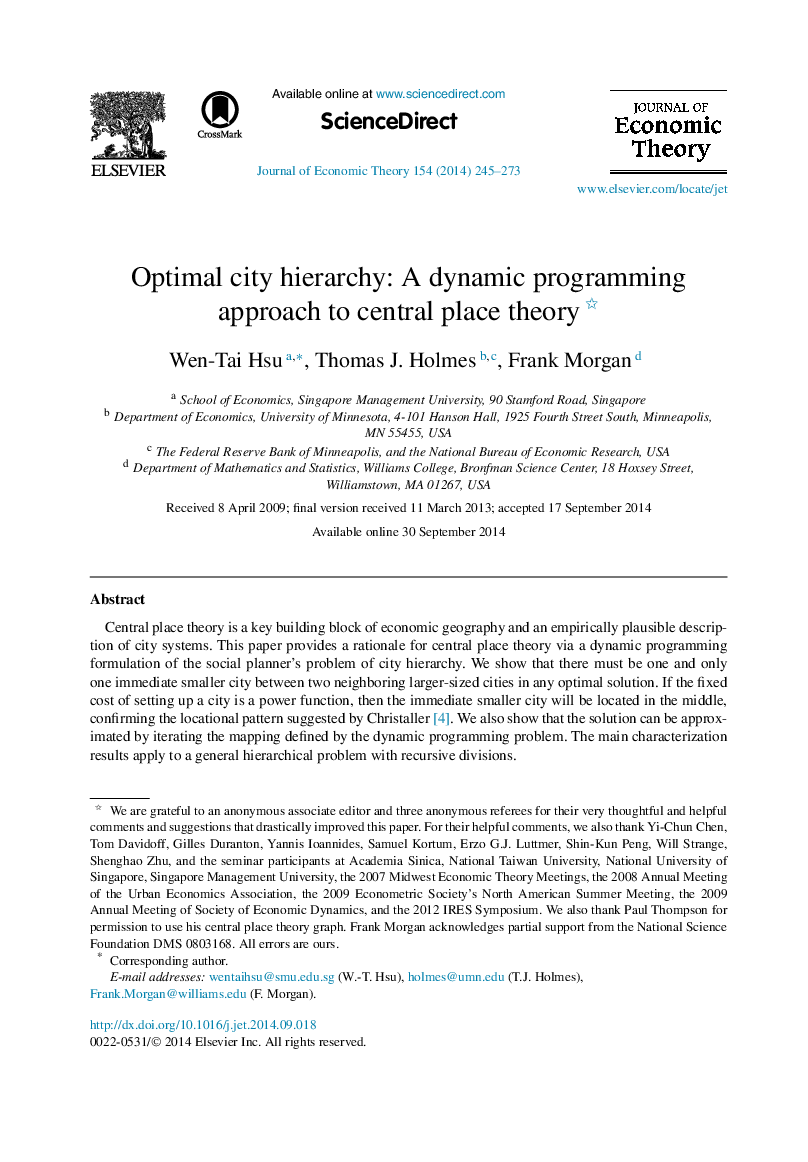| Article ID | Journal | Published Year | Pages | File Type |
|---|---|---|---|---|
| 956790 | Journal of Economic Theory | 2014 | 29 Pages |
Central place theory is a key building block of economic geography and an empirically plausible description of city systems. This paper provides a rationale for central place theory via a dynamic programming formulation of the social planner's problem of city hierarchy. We show that there must be one and only one immediate smaller city between two neighboring larger-sized cities in any optimal solution. If the fixed cost of setting up a city is a power function, then the immediate smaller city will be located in the middle, confirming the locational pattern suggested by Christaller [4]. We also show that the solution can be approximated by iterating the mapping defined by the dynamic programming problem. The main characterization results apply to a general hierarchical problem with recursive divisions.
